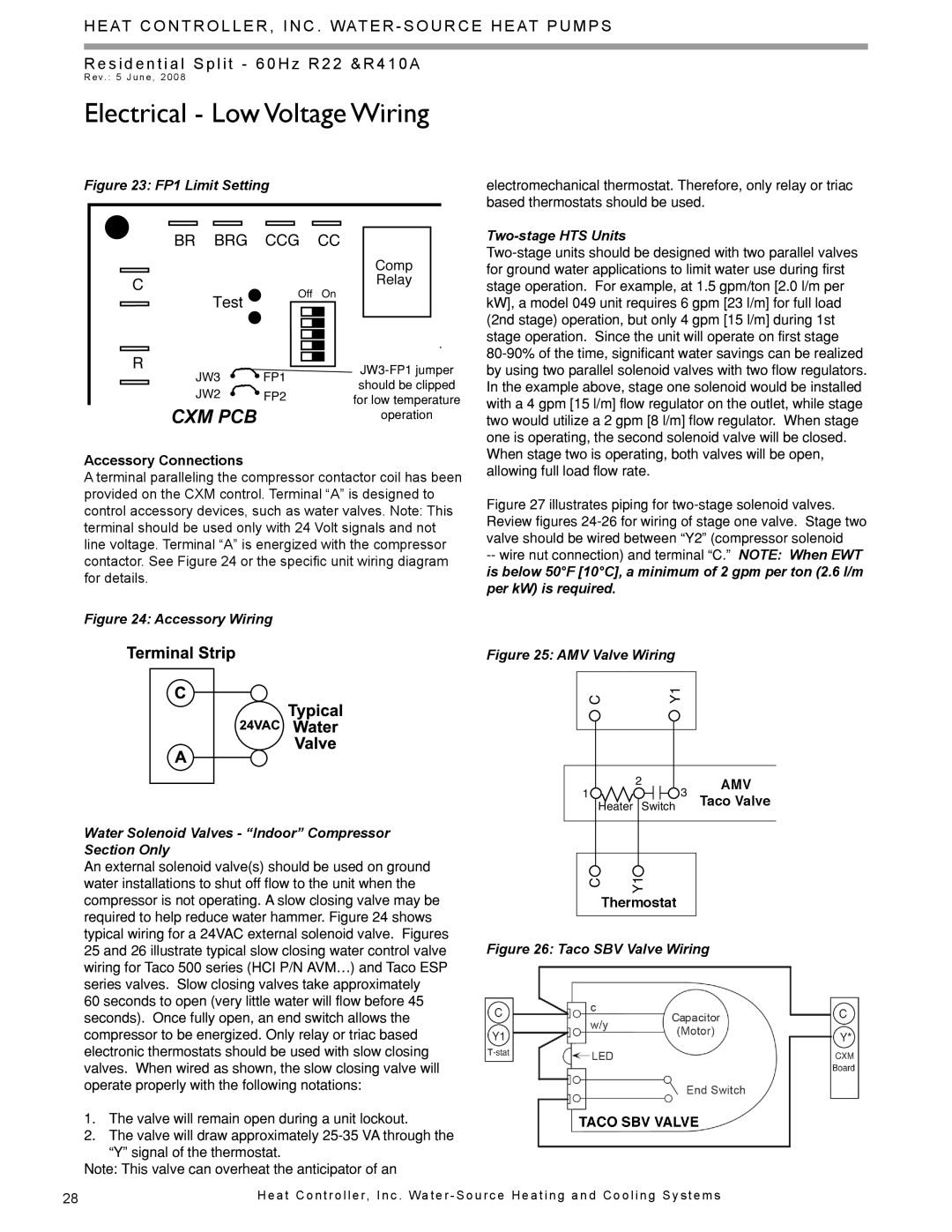
H E AT C O N T R O L L E R , I N C . WAT E R - S O U R C E H E AT P U M P S
R e s i d e n t i a l S p l i t - 6 0 H z R 2 2 & R 4 1 0 A
R e v. : 5 J u n e , 2 0 0 8
Electrical - Low Voltage Wiring
Figure 23: FP1 Limit Setting
| ||
| should be clipped | |
CXM PCB | for low temperature | |
operation | ||
|
Accessory Connections
A terminal paralleling the compressor contactor coil has been provided on the CXM control. Terminal “A” is designed to control accessory devices, such as water valves. Note: This terminal should be used only with 24 Volt signals and not line voltage. Terminal “A” is energized with the compressor contactor. See Figure 24 or the specific unit wiring diagram for details.
Figure 24: Accessory Wiring
Water Solenoid Valves - “Indoor” Compressor Section Only
An external solenoid valve(s) should be used on ground water installations to shut off flow to the unit when the compressor is not operating. A slow closing valve may be required to help reduce water hammer. Figure 24 shows typical wiring for a 24VAC external solenoid valve. Figures 25 and 26 illustrate typical slow closing water control valve wiring for Taco 500 series (HCI P/N AVM…) and Taco ESP series valves. Slow closing valves take approximately
60 seconds to open (very little water will flow before 45 seconds). Once fully open, an end switch allows the compressor to be energized. Only relay or triac based electronic thermostats should be used with slow closing valves. When wired as shown, the slow closing valve will operate properly with the following notations:
1.The valve will remain open during a unit lockout.
2.The valve will draw approximately
Note: This valve can overheat the anticipator of an
electromechanical thermostat. Therefore, only relay or triac based thermostats should be used.
Two-stage HTS Units
Figure 27 illustrates piping for two-stage solenoid valves. Review figures 24-26 for wiring of stage one valve. Stage two valve should be wired between “Y2” (compressor solenoid
--wire nut connection) and terminal “C.” NOTE: When EWT is below 50°F [10°C], a minimum of 2 gpm per ton (2.6 l/m per kW) is required.
Figure 25: AMV Valve Wiring
C | Y1 |
|
|
| 2 | AMV |
1 | Heater Switch | 3 Taco Valve |
C | Y1 |
| Thermostat |
Figure 26: Taco SBV Valve Wiring
28 | H e a t C o n t r o l l e r, I n c . Wa t e r - S o u r c e H e a t i n g a n d C o o l i n g S y s t e m s |
